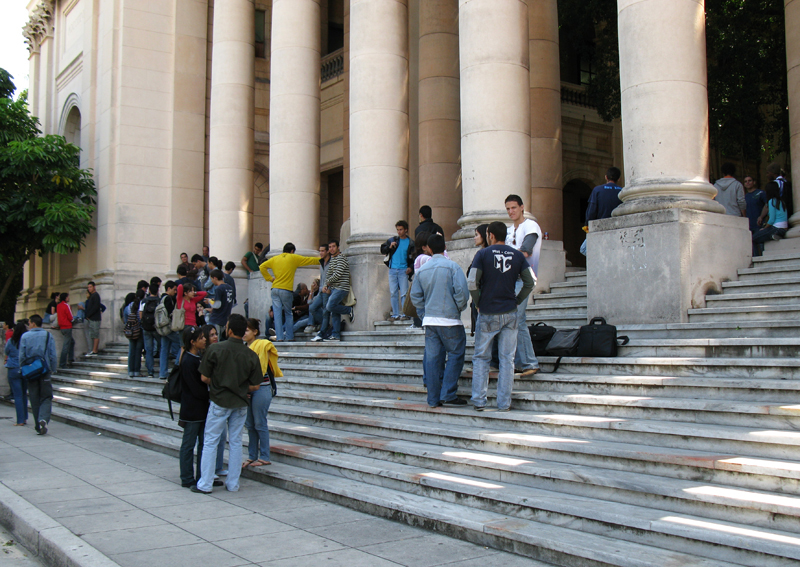Source: Photograph (2010) by WTL© on site at the Universidad de La Habana.
Comments: This is the entrance to the university's Rubén Martínez Villena Library. The library was established in 1936. This photo seemingly captures a peaceful atmosphere among current students at the University. However, before the Communists took power in 1959, the University was the site of a number of student organizations roughly aligned with various political groups and parties. The most prominent student organization was the Federación Estudiantíl Universitaria (FEU), which was created by one of the founders of the Cuban Communist Party. In 1933, for instance, the FEU was instrumental in overturning the dictatorial rule of General Gerardo Machado y Morales (1871-1939), Cuba's fifth President. Due to the anti-Batista riots in Havana and at the University that began in 1952, students who were members of the FEU were captured, tortured, and killed. The FEU then undertook a fledgling guerrilla war against the dictator and his regime. Fidel Castro, who had graduated from the University's Law School, was allied with the FEU, but he was not precisely a member of the organization; the FEU, however, allied with Castro's July 26th Movement, which is the name of the movement that led the Cuban Revolution. When Castro began the Revolution in the Sierra Maestra in 1956, there was a failed assassination attempt against Batista at the Presidential Palace in which many student attackers were killed; Batista struck back by arresting and executing many of the surviving students. Batista then closed the University. The Castro regime re-opened the university in 1959 and put an end to student demonstrations and political affiliations. By 1961, particularly after the Bay of Pigs invasion, public student gatherings were forbidden unless they were government sponsored. As per the informaton in the university's website, The student body was "purified" of all opposition to Fidel Castro. Dissenters were accused of being Batista supporters and jailed, and some were executed.
Humanities topics: Compare and contrast this scene with the library at your college or university. Knowing about the events rehearsed in the comments above, do you think those events underlie the attitudes and feelings of students like the ones you see in this photo in 2010? Or maybe not, right?

